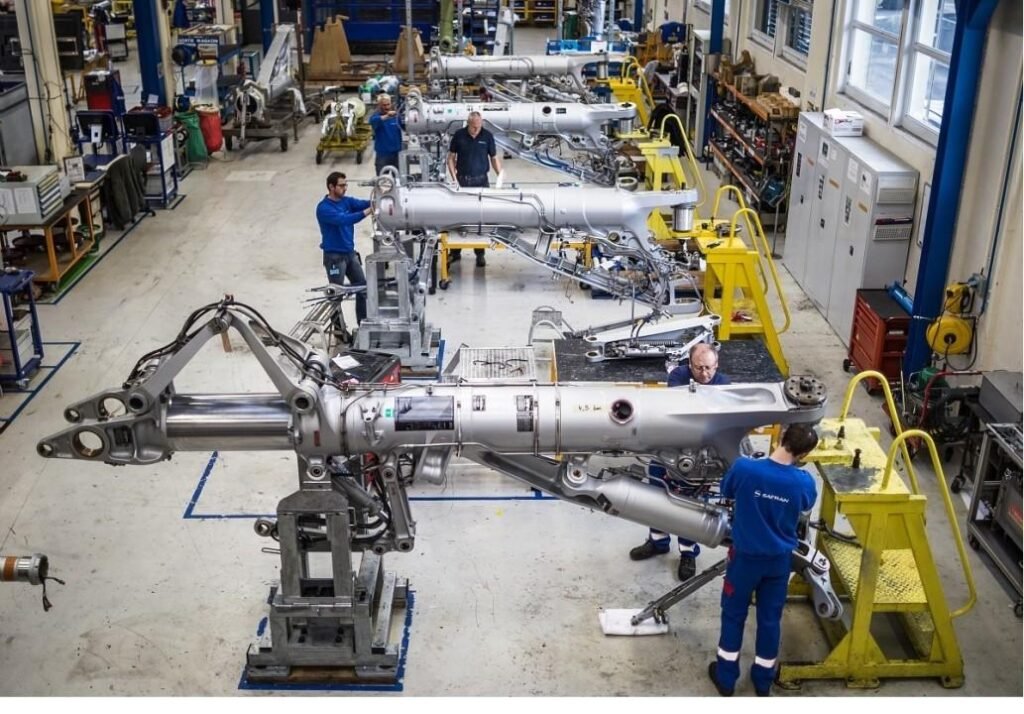Aircraft Leasing has become a strategic airline option in the new-age aviation industry. This approach provides flexibility, financial advantages, and operational efficiencies crucial for success in a competitive market.
What is Aircraft Leasing?
Aircraft leasing refers to airlines renting aircraft rather than purchasing them outright. This strategy allows airlines to expand their fleets, manage capacity, and respond to market demands without the significant financial outlay required for aircraft ownership.
Why Do Airlines Opt for Aircraft Leasing?
Before discussing the benefits, it’s important to understand why airlines lease aircraft. Leasing allows airlines to adjust their fleet size and composition in response to changing demand, vital for maintaining profitability.
Key Benefits of Aircraft Leasing for Airlines
Leasing aircraft offers many advantages for airlines, mainly regarding financial management and operational flexibility.
Cost Efficiency:
One of the most significant benefits of Aircraft Leasing is cost efficiency. Purchasing an aircraft requires a substantial capital investment, which can strain an airline’s financial resources. Leasing allows airlines to avoid this upfront cost, enabling them to allocate funds to other critical business areas, such as marketing, route expansion, or service improvements.
Fleet Flexibility:
Leasing allows airlines to adjust their fleet size according to market conditions. During peak seasons or periods of high demand, airlines can quickly increase their fleet by leasing additional aircraft. Conversely, they can return leased aircraft during low-demand periods, avoiding the costs of owning underutilized planes.
Access to New Technology:
Leasing allows airlines to access the latest aircraft models and technology without purchasing them outright. This ensures that airlines can offer the latest in-flight features and efficiencies, improving customer satisfaction and reducing operational costs, particularly fuel consumption.
Reduced Maintenance Costs:
Leased aircraft often come with maintenance packages, reducing the airline’s burden of maintenance costs. This arrangement is particularly beneficial for smaller airlines that may need more extensive infrastructure to maintain a large fleet of owned aircraft.
Improved Cash Flow Management:
Airlines can better manage their cash flow by leasing rather than buying. Leasing typically involves fixed monthly payments, which are easier to budget and plan for than the unpredictable costs of owning and maintaining aircraft.
Tax Benefits:
In some cases, Aircraft Leasing can offer tax advantages. Leasing payments are often considered a business expense, which may be deductible from taxable income. This can result in significant tax savings for airlines, further enhancing the financial benefits of leasing.
Conclusion
Aircraft Leasing provides airlines with various benefits, from financial flexibility to operational efficiency. As the aviation industry evolves, leasing will likely remain an essential strategy for airlines seeking to optimize their operations and maintain a competitive edge in the market. Whether it’s managing cash flow, accessing new technology, or reducing maintenance costs, the advantages of leasing make it an attractive option for airlines of all sizes.
1. What are the primary advantages of aircraft leasing for airlines?
The primary advantages of aircraft leasing for airlines include:
- Flexibility: Leasing allows airlines to adjust their fleet size based on seasonal demand or market conditions without committing to long-term ownership.
- Cost Management: Leasing can reduce upfront capital expenditures and improve cash flow, as airlines pay lease rentals rather than purchasing aircraft outright.
- Access to Modern Aircraft: Leasing provides access to newer, more efficient aircraft without the large investment required for purchasing, helping airlines stay competitive with the latest technology.
- Maintenance and Upgrades: Leases often include maintenance and support services, which can reduce the burden of aircraft upkeep and minimize operational disruptions.
- Risk Mitigation: Leasing transfers some of the financial risks and residual value concerns of aircraft ownership to the lessor, protecting airlines from potential depreciation losses.
2. How does aircraft leasing help airlines manage financial risk?
Aircraft leasing helps airlines manage financial risk by:
- Reducing Capital Requirements: Minimizing the need for large capital outlays for purchasing aircraft, which can be especially beneficial for cash flow management and financial stability.
- Fixed Costs: Providing predictable, fixed lease payments that help airlines budget and plan their finances more effectively.
- Avoiding Depreciation Risks: Shifting the risk of aircraft depreciation to the lessor, thus protecting airlines from potential losses due to declining aircraft values.
3. What types of aircraft leases are available to airlines?
The main types of aircraft leases available to airlines are:
- Operating Leases: Short-term leases typically ranging from 1 to 10 years, allowing airlines to use aircraft without acquiring ownership. Ideal for managing fleet flexibility and seasonal demand.
- Finance Leases: Long-term leases that can span the majority of the aircraft’s useful life, often with an option to purchase at the end. This type is closer to ownership and can be beneficial for long-term planning.
- Wet Leases: Leases that include aircraft, crew, maintenance, and insurance (ACMI). Useful for airlines needing additional capacity or temporary operations support.
4. How does aircraft leasing support fleet management and operational efficiency?
Aircraft leasing supports fleet management and operational efficiency by:
- Enabling Fleet Flexibility: Allowing airlines to quickly adjust their fleet size in response to changing market conditions, seasonal fluctuations, or new route demands.
- Improving Utilization Rates: Leasing helps airlines optimize their fleet usage by providing access to a diverse range of aircraft types suited for different routes and capacities.
- Reducing Downtime: Leasing agreements often include maintenance support, which helps minimize aircraft downtime and ensures consistent operational performance.
5. What are the potential drawbacks of aircraft leasing for airlines?
Potential drawbacks of aircraft leasing include:
- Higher Long-Term Costs: While leasing reduces upfront costs, it may result in higher overall expenses compared to purchasing aircraft, especially over long periods.
- Less Control: Airlines may have less control over the aircraft’s condition and configuration compared to owning their fleet, depending on lease terms.
- Contractual Obligations: Leasing agreements may come with strict terms and conditions, including penalties for early termination or exceeding usage limits.



More Stories
Industrial Revolution 4.0 and the Dawn of Industry 5.0
Why Choose Dubai for Your Business? A Guide to Top Business Setup Consultants and Solutions Providers
Durable Custom wax Paper: Keeps Food Fresh